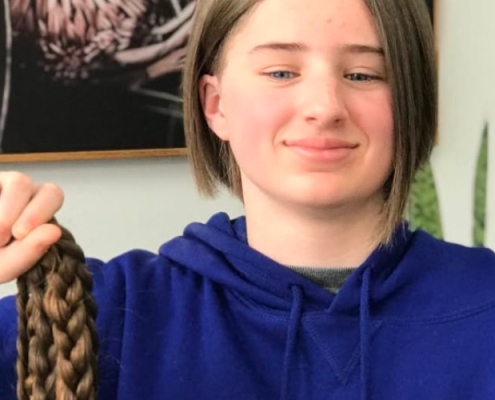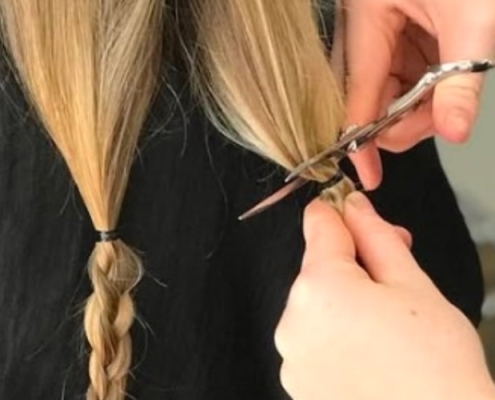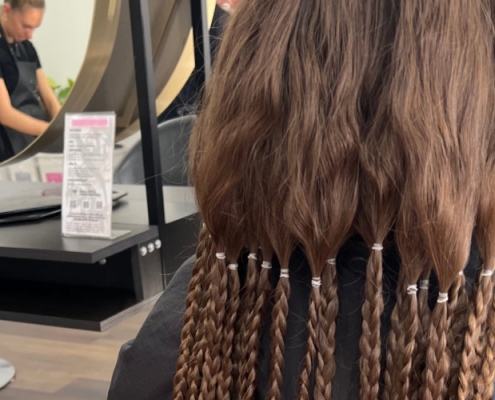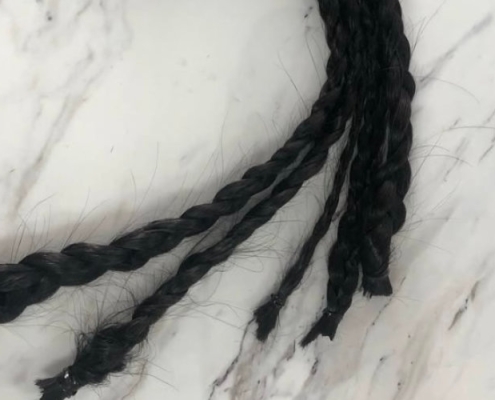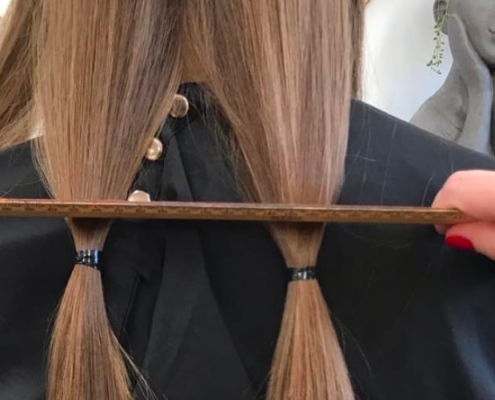Growing Your Hair for Donation: Tips for Healthy Growth
Donating your ponytail is a meaningful act that can make a real difference in the lives of those experiencing hair loss due to medical conditions such as cancer and alopecia. However, growing your hair long enough for donation takes time, patience, and proper care. Ensuring that your hair remains healthy throughout the process is essential so that it can be used to create high-quality wigs.
This guide will help you grow strong, healthy hair suitable for donation while minimising damage and breakage.
Step 1: Understand the Hair Donation Requirements
Before you start growing your hair for donation, it’s important to understand the requirements set by hair donation organisations. Most charities have specific guidelines to ensure the hair they receive is suitable for wig-making.
General requirements include:
- Minimum length: Most organisations require at least 20 cm to 35 cm of hair.
- Healthy hair: Hair should be free from excessive split ends, severe damage, and breakage.
- Colour-treated hair: Some charities accept coloured hair, while others do not. It’s important to check with the specific organisation.
To ensure your hair meets the correct criteria, refer to our guide: Who Can Donate Hair? Requirements and Guidelines.
Step 2: Maintain a Healthy Hair Care Routine
Healthy hair starts with a good hair care routine. To grow your hair long and strong for donation, follow these essential steps:
1. Wash Your Hair Properly
- Use a gentle, sulphate-free shampoo to cleanse the scalp without stripping natural oils.
- Limit hair washing to 2-3 times per week to prevent dryness.
- Use a conditioner after every wash to keep hair hydrated and manageable.
2. Minimise Heat and Chemical Damage
- Avoid excessive heat styling, such as blow-drying, straightening, and curling, as it weakens the hair shaft.
- If you must use heat tools, apply a heat protectant spray first and use the lowest heat setting possible.
- Reduce chemical treatments like bleaching, perming, or relaxing, as they can make the hair brittle and unsuitable for donation.
3. Trim Split Ends Regularly
- Getting a trim every 8-12 weeks prevents split ends from worsening.
- Even though you are growing your hair, maintaining its health is more important than keeping length with excessive damage.
Step 3: Nourish Your Hair from Within
What you eat plays a huge role in hair health. A well-balanced diet can promote faster and stronger hair growth.
Essential Nutrients for Hair Growth
- Protein: Hair is made of keratin, a protein, so eating eggs, lean meats, nuts, and legumes supports healthy hair.
- Iron: Iron deficiency can lead to hair thinning. Include leafy greens, red meat, and lentils in your diet.
- Omega-3 Fatty Acids: Found in fish, chia seeds, and flaxseeds, these keep the scalp hydrated.
- Biotin: A B-vitamin that strengthens hair and prevents brittleness. Sources include eggs, avocados, and almonds.
- Vitamin D: Supports hair follicle health. Get enough sunlight exposure or eat fortified foods.
Step 4: Protect Your Hair from Damage
Everyday habits can significantly affect hair health. Adopting protective measures can help maintain hair strength as it grows.
1. Use a Silk or Satin Pillowcase
- Cotton pillowcases cause friction and can lead to breakage, while silk or satin pillowcases reduce hair damage.
2. Avoid Tight Hairstyles
- Constantly pulling hair back in tight ponytails or buns can cause tension and breakage.
- Opt for loose hairstyles or soft hair ties to prevent stress on the roots.
3. Protect Your Hair from the Sun
- UV rays can weaken hair and cause colour fading.
- Wear a hat or apply a UV-protectant hair spray when spending long hours in the sun.
Step 5: Be Patient and Track Your Progress
Growing hair for donation takes time, but being patient and consistent with your hair care routine will help you reach your goal.
How Long Will It Take?
- On average, hair grows about 1 to 1.5 cm per month.
- Depending on your current length, it may take 12-24 months to reach the required donation length.
Tips to Stay Motivated
- Take monthly photos to track your hair growth progress.
- Set a goal length and celebrate small milestones along the way.
- Remind yourself why you’re donating by reading about the impact of hair donations: Why Hair Donations Matter: Supporting Cancer and Alopecia Patients.
Step 6: Booking Your Hair Donation Appointment
Once your hair reaches the required length, the next step is to visit a professional hairdresser for your donation cut. A trained stylist will ensure that your ponytail is cut correctly and sent to the appropriate donation organisation.
Learn more about what happens during the hair donation process here: How to Donate Your Ponytail: A Step-by-Step Guide.
Final Thoughts
Growing your hair for donation requires dedication, but with proper care and patience, you can make a significant difference in someone’s life. By following a healthy haircare routine, protecting your hair from damage, and maintaining a nutritious diet, you can ensure your hair remains in excellent condition for donation.
If you’re ready to take the next step or want to learn more about how to donate, visit: Ponytail Donations.
Every strand counts, and your contribution can bring hope and confidence to someone in need.


